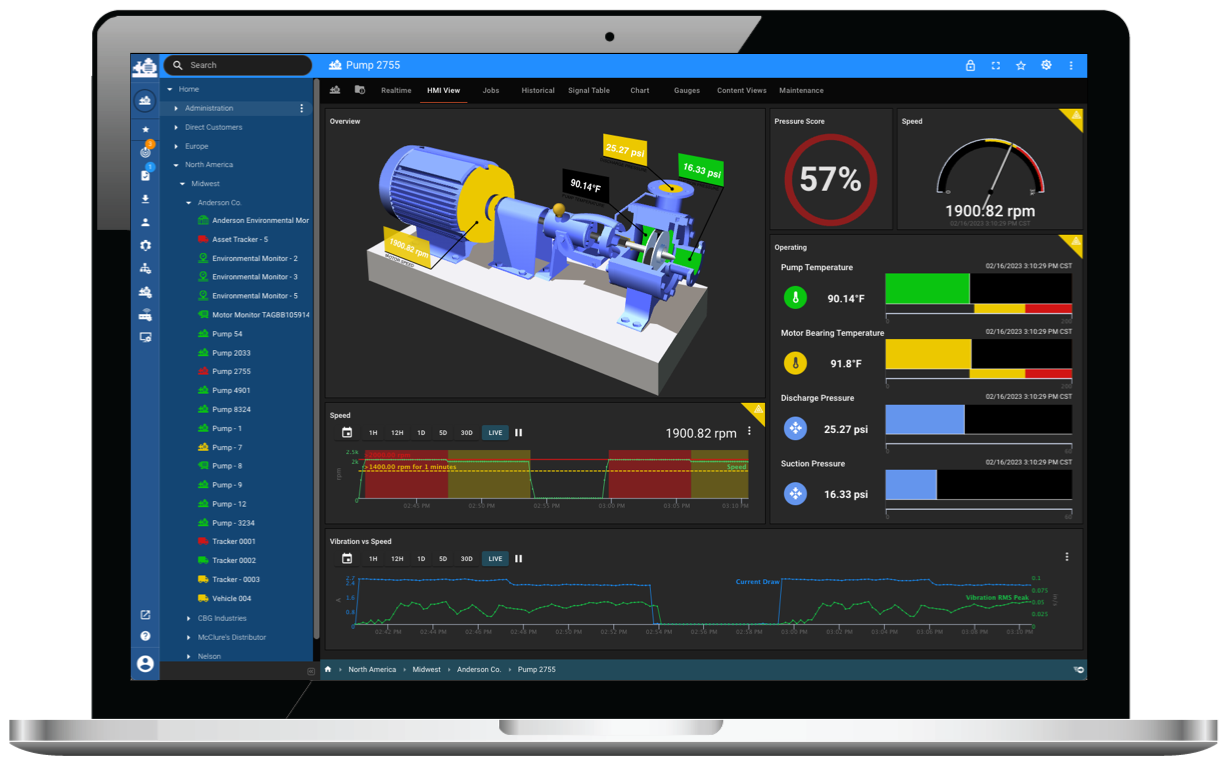Blog Series: Preparing to Commercialize a Connected Product
by Stacey O'Brien, on November 3, 2021
In our last blog post, we discussed some of the reasons an organization may want to consider adding a software component to existing hardware, including the ability to generate new recurring revenue, increase margins on hardware sales, and enhance the overall value of their business. We also outlined some of the challenges organizations face as they get started (e.g., limited experience with software development) and tips to address those challenges.
Once an organization overcomes those early hurdles and has a complete hardware/software solution in place, it’s time to transition from a proof-of-concept phase to full commercial deployment. At this point, organizations leveraging Exosite’s ExoSense® remote monitoring application generally feel confident about the connectivity of their hardware and have a good handle on how to add users to their solution, create dashboards, set alerts, etc. But there are many other topics to consider as you move forward.
We’ve worked with hundreds of organizations—in a wide variety of industries and use cases—as they’ve made this transition. Regardless of the way the end solution will be used, there are common questions every organization must answer in order to fully prepare themselves to manufacture, sell, and support a complete connected solution on a large scale.
To help walk you through this process, we’re kicking off a “Preparing to Commercialize a Connected Solution” blog series. With each post, we’ll discuss the things you need to consider as you make this transition, from scaling and deployment, to onboarding users and monetization. We’ll also outline best practices and key insights to help you along the way. Below, we’ve outlined the topics you can expect to learn more about in this series.
Blog #1: Manufacturing & Deployment
When scaling up from a small number of devices, it is easy to overlook some manual steps that may be required during the commercial deployment process. For example, how will you automate the manufacturing, procurement, and claiming of devices at scale? In the "Manufacturing and Deployment" blog post in this series, we'll provide best practices and key considerations for handling a large number of devices.
Commercialization Series - Manufacturing & Deployment
Blog 2: Monetization, Pricing, & Billing
During a proof-of-concept phase, it’s easy to focus on solving technical problems. When transitioning to a commercial deployment, it’s time to focus on structuring your business model to optimize monetization capabilities and enable recurring billing. Based on our vast experience with customers in different industries and use cases, we’ll use the "Monetization, Pricing, and Billing" blog post to outline common business models that are enabled by Exosite’s product offering and discuss common topics in this area that are often overlooked during commercialization.
Commercialization Series - Monetization, Pricing, & Billing
Blog 3: Onboarding End Users
Exosite’s products allow you to fully customize and control the end-user experience for your customers. Once you move into commercial deployment, you’ll want to ensure that your customer onboarding process aligns with your internal processes. In the "Onboarding End Users" blog post in this series, we will highlight Exosite’s product features that are designed to assist in this process and outline additional considerations that should be made to ensure a great end-customer experience.
Commercialization Series - Onboarding End Users
Blog 4: Support and Troubleshooting
Once customers are successfully onboarded, it’s important to ensure their experience continues to be seamless, productive, and valuable. In the "Support and Troubleshooting" post of this blog series, we will discuss the types of support you should be prepared to provide and key steps you can take to reduce the amount of support that will be necessary for end customers.
Commercialization Series - Support and Troubleshooting
Blog 5: Iterating and Adding Value for Customers
Once your solution is commercially deployed, you’ll learn valuable lessons about how your customers actually use it. This information can then be used to iterate on your solution to incorporate new features and keep things running smoothly. We’ll use the “Iterating and Adding Value for Customers” post to identify ways you can prepare to make regular updates to your solution to ensure it continues delivering value to your customers.
Commercialization Series - Focus on Value to Users / Iterating on New Capabilities
New to Exosite? Connect with an Exosite solution expert to talk about your application needs or schedule a demo to learn more about our ExoSense® remote monitoring application.



